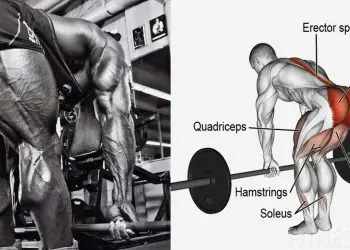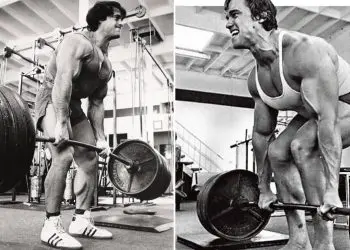Last week in Part 1 of The Good and Bad of Stretching we talked about the dangers of static stretching before exercise. We looked at research that showed not only does static stretching before exercise decrease performance but it also has been shown to actually increase the chance of injury. This week I want to talk about what is a better option for getting warmed up and ready for exercise and performance as well as talk about when static stretching may be beneficial when added to your normal exercise routine.
A well designed warm up should increase body heat and blood flow. Warm muscles will pull oxygen from the bloodstream more efficiently and withstand loads better. So how do we get there? I hinted at this a little bit last week, the answer is dynamic stretching. If you are unaware of what dynamic stretching is, it’s utilizing continuous movement to increase blood flow to the muscles and prepare your body for exercise, or basically stretching your muscles while moving. Examples of dynamic exercises are walking lunges, straight leg swings, bodyweight squats, arm circles, etc. Performing whatever activity you plan on doing in a light manner could also be considered dynamic stretching. This is a much better way to warm up the body without jeopardizing performance. Dynamic stretching will also help get your heart rate up, loosen muscles and tendons to increase the range of motion of various joints, and literally warm up the body. To make sure there is no confusion, dynamic stretching and ballistic stretching are not the same things. Ballistic stretching involves trying to force a part of the body past its normal range of motion (ie. bouncing down to try to touch your toes.) In my opinion ballistic stretching is very dangerous.
To show just how effective dynamic stretching can be let’s look at a study titled “Static Versus Dynamic Stretching Effect on Agility Performance” done by Patrick Troumbley at Utah State University in 2010. Last week we established dynamic stretching was better than static stretching, but we didn’t establish if it was better than no stretching. In this study they looked at the difference in agility after dynamic stretching, static stretching, dynamic stretching with static stretching, as well as no stretching prior to explosive agility movements. In this study 14 men and 10 women performed the T-Drill to assess agility. The results showed no difference between the static stretching and no stretching group as well as no significant difference in the dynamic with static stretching group. The dynamic stretching group showed statistically significant improvements over all groups. The order of time drills showed dynamic stretching had the best times, dynamic with static stretching came in 2nd, no stretching came in 3rd, and matching everything we looked last week the static stretching group came in dead last.
Now that we’ve established that dynamic stretching before activity is the way to improve performance, it’s time to see if duration makes a big difference or not. A study done at the Tunisian Research Laboratory in 2012 looked at performance in 10- to 20-m sprints following 1, 2 and 3 sets of dynamic stretching. 16 highly trained male participants completed a 5 minute general running warm up before performing 3 pre-intervention measures of 10- to 20-m sprint. The interventions included 1, 2, and 3 sets of active dynamic stretches of the gastrocnemius, gluteals, hamstrings, quadriceps, and hip flexors. They performed approximately 14 times for each exercise while walking. 5 minutes separated the end of the warm-up and the 3 post-intervention measures of 10- to 20-m sprints. The results showed a significant improvement in sprint performance in the 1 and 2 set groups while there was a significant decrease in sprint performance in the 3 set group. So what we can take away from this is keeping dynamic stretching short and sweet and not overdoing it is probably best for performance. Dynamic stretching is a good thing, but in this case there can be too much of a good thing.
I could go on and on with a lot of research that supports utilizing dynamic stretching, not only because it routinely shows better performance than static stretching, but also because unlike static stretching, dynamic stretching has been shown to better performance more than not stretching at all. I’ll spare you though, the point is dynamic stretching flat-out works. It warms the muscles while getting the heart rate up, improves flexibility and range of motion, and improves performance. What’s not to like about that?
Level Up Your Fitness: Join our 💪 strong community in Fitness Volt Newsletter. Get daily inspiration, expert-backed workouts, nutrition tips, the latest in strength sports, and the support you need to reach your goals. Subscribe for free!
I’ve done a lot of picking on poor static stretching, but it’s not all bad. While I’d never recommend static stretching cold muscles prior to a workout, the general consensus is post-workout is an ideal time to static stretch. Your muscles are already warm so you won’t be stretching cold muscles. Some of the primary effects of static stretching are decreased muscle tension and increased muscle relaxation making it an ideal activity following exercise. Performing static stretching after exercise can also help with your recovery.
Another great alternative to stretching is the use of a foam roller. In fact studies have shown that foam rolling pre-workout can help improve range of motion without sacrificing performance. I still recommend dynamic stretching over foam rolling for a pre-workout activity because of how it increases performance and warms up the muscles and body, but foam rolling can definitely be helpful. When used post-workout studies have shown that foam rolling can decrease soreness and improve range of motion and muscle contraction.
Using a foam roller and static stretching isn’t a bad idea on off days either. It can help increase range of motion and flexibility over time. In fact studies have actually shown that static stretching can improve strength, endurance and jumping in mostly sedentary people. Of course if you are a reader of this site chances are you are not mostly sedentary, but I think it helps show that on its own it can be beneficial in times when it’s not combined with exercise.
So there you have it. Dynamic stretch before a workout, foam roll or static stretch after your workout as well as during off days and you’ll be on your way a better performing body.
Happy Lifting!








